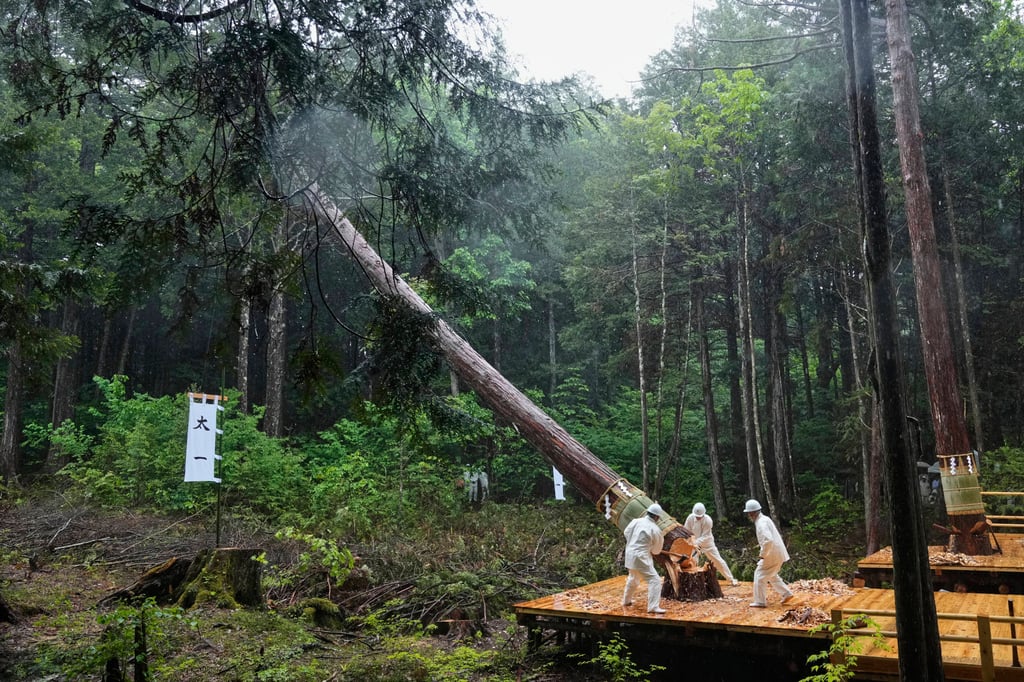Deep in the forests of the Japanese Alps, Shinto priests keep watch as woodsmen dressed in ceremonial white chop their axes into two ancient cypress trees, timing their swings so that they strike from three directions.
An hour later, the head woodcutter shouts, “A tree is falling!” as one of the 300-year-old trees crashes down, the forest echoing with a deep crack. A moment later, the other cypress topples over.
The ritualistic harvesting of this sacred timber is part of a remarkable process that has happened every two decades for the last 1,300 years at Ise Jingu, Japan’s most revered Shinto shrine.
Each generation, the Ise complex is knocked down and rebuilt from scratch, a massive US$390 million demolition and construction job that takes about nine years. It requires the country’s finest carpenters, woodcutters, builders and artisans to pour their hearts into the smallest details of structures that are doomed from the moment the work begins.
 Woodcutters chop down a cypress tree during the rebuilding of the Ise Jingu shrine in the Akasawa Natural Recreational Forest in Agematsu, Japan, in June 2025. Photo: AP
Woodcutters chop down a cypress tree during the rebuilding of the Ise Jingu shrine in the Akasawa Natural Recreational Forest in Agematsu, Japan, in June 2025. Photo: AP
The buildings at Ise will only stand for about a decade before the project starts all over again, but as the priests consecrate the construction, the workers shout: “A building for 1,000 years! Ten thousand years! A million years and forever!”
Those close to the shrine often recognise a deep poignancy about the way the never-ending rebuilding intertwines with their lives.


AloJapan.com